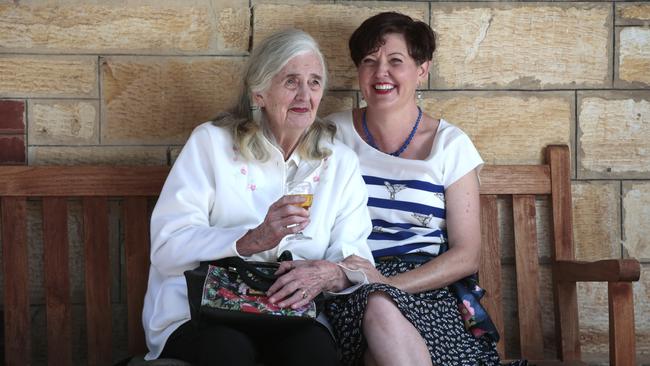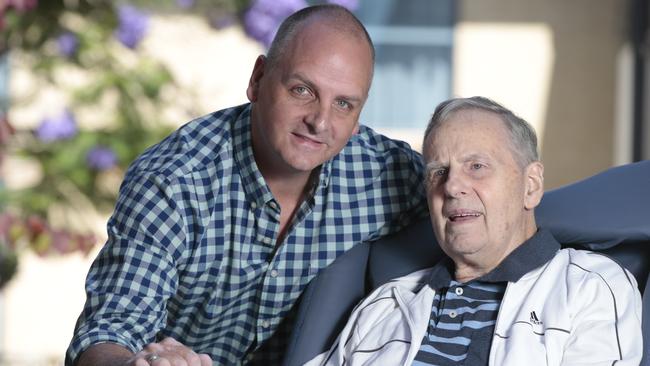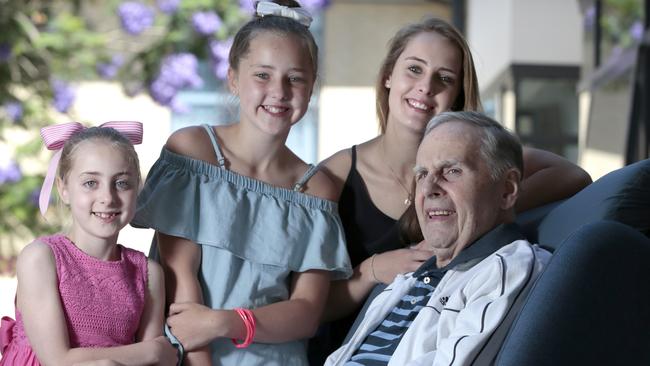The changing culture in aged care
THERE’S a revolution unfolding within the aged-care community. Homes are becoming much more attuned to the needs and wants of the individual rather than the group.
SA News
Don't miss out on the headlines from SA News. Followed categories will be added to My News.
THE like-it-or-lump-it approach that sees children throwing dinner, bath and bedtime tantrums has long been used in aged care but is finally falling from favour.
Regimented schedules in aged care-homes are being replaced with progressive thinking that puts residents at the centre of the plan, says Alzheimer’s Australia SA acting chief executive officer Rajiv Chand.
“Aged care is now very much moving to person-centred care,” he says.
“Not everyone likes to get up at 7am, have a shower and have breakfast.
“It’s (about) getting used to that thinking that we’re all unique.
“You shouldn’t need to conform to the schedule. Why can’t the schedule work around you?”
Mr Chand says every resident used to get the same food and the same care at the same times but they were likely to be happier if they were treated as individuals, instead of as a group.
“Not everyone likes porridge or toast for breakfast,” he says.
“It’s about being very much in tune with a person’s likes or dislikes.

“It’s very simple but it used to happen — everyone used to get the same everything.”
He says many of the changes to dementia care do not have to cost more.
As well as changing how staff relate to residents and how their schedules are managed, care providers are doing more to create a homelike atmosphere.
Mr Chand says there is “very much a positive trend” in aged care and people looking for a place for their parent living with dementia should do their homework.
“Do your research; go to a few aged-care homes,” he says.
“Maybe get there at lunch time and sit there for an hour or two. You’ll work out if this is the right place you want to put your mum or dad.”
In November, Eldercare won the Alzheimer’s Australia SA Dementia Care Excellence Award at the 2016 SA Community Achievement Awards.
Dementia Excellence Program manager Sarah Jamieson says one of the more simple changes has been leaving out jugs and cups so residents can help themselves to a drink without having to ask, just as they would if they were living in their own home.
She says Eldercare’s revised approach to dementia care over the past two years is having “profound positive effects” on both residents and staff. The change has been from “task-focused” care to a “person-centred” approach.
Mrs Jamieson says residents are becoming more relaxed, better understood and increasingly active because the Dementia Excellence Program promotes “real individual choice”.
“Our aim is to empower residents to make their own decisions relating to their daily care including when and how they like to bathe or shower, what they want to eat and which activities they enjoy participating in,” she says.
“Residents are sleeping better, taking less medication and many are communicating more with families and staff.
“The ongoing positive outcomes we are seeing, and feedback we are receiving from residents, families and staff, have convinced us that we have found the key to improving the wellbeing and quality of life for our residents who are living with dementia.”
Eldercare’s Dementia Excellence Program was created six years ago and has been introduced at 12 of the organisation’s residential aged-care facilities.
Mrs Jamieson says staff and families need to work on understanding cues from people living with dementia.
In the past, many would dismiss wandering, yelling and violence as meaningless byproducts of dementia.
“Our job is to try to see what people are telling us when the words have gone,” she says.
“People living with dementia may not be able to say ‘I’m cold; I’m tired’ but if we don’t pick it up, they’re going to show us.
“It doesn’t take any more time and if you do it this way people aren’t so distressed; people aren’t fighting you.”
The changes have included making the hallways more stimulating places, with half-finished puzzles left on tables, or a pile of napkins that beg to be folded.
The bits and pieces are changed regularly to avoid having them become “still life” that no one notices.
“Traditionally, corridors are very bland and other people’s rooms are interesting,” she says. “People want to wander; we all wander in our lives and go for a walk but then we come to aged care and sit down.”
There is also a focus on pain relief, especially where residents appear anxious or unsettled but are unable to verbalise.
Mrs Jamieson says some residents who had stopped talking are beginning to speak again.
Brett Partington visits his father Bob, 72, every day at Eldercare’s The Lodge, at Wayville.

Mr Partington, who is in the later stages of Alzheimer’s, owned and ran a business at Burnside before he was diagnosed with dementia at 67.
Brett, 48, of Woodside, says his father speaks very little now but has a supportive family and care staff who know him well.
“His eyes tell us everything; we’re a family that’s highly tuned to that,” he says. “If you don’t know the person with dementia, you can trigger off a lot of (negative) behaviours.
“The people that are his favourites have a special quality — it’s a warmth.”
Brett says learning about dementia has been all-consuming and he wants to share what he has learned. As well as running the family business, he volunteers as a patient advocate and runs the weekly men’s club at The Lodge.

Elisabeth Pengelley’s mother Dolores, 81, appears completely at home at The Lodge, where she has lived since June, 2014.
“I’ve always got lots of people to talk to,” she says.
Elisabeth, who visits several times a week, says it was a difficult but necessary decision to move her mother into residential care.
“Her dementia had been getting worse over the period of a year,” she says.
“She was forgetting where her car was parked, forgetting to lock the door.
“I thought it would be kind of depressing but I think she’s forgotten about her house now. The staff are really good with her and she loves her room.”
Dolores and Elisabeth Pengelley are the aunt and cousin of Boomer editor Jill Pengelley.
THE FACTS
■ DEMENTIA is the second leading cause of death in Australia and there is no cure.
■ More than 353,800 Australians are living with dementia.
■ Without a medical breakthrough, that number is expected to be almost 900,000 by 2050.
■ An estimated 1.2 million people are involved in the care of a person with dementia.
■ In South Australia, there are more than 29,246 people living with dementia and it is expected to be almost 69,620 by 2050.
■ Early signs of dementia are subtle and vague and may not be immediately obvious.
■ Some common symptoms may include progressive and frequent memory loss, confusion, personality change, apathy and withdrawal, and loss of ability to perform everyday tasks.
■ For support call the National Dementia Helpline on 1800 100 500.
Source: sa.fightdementia.org.au


